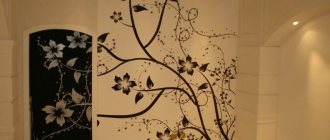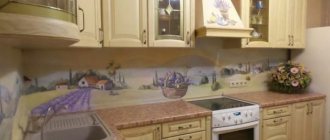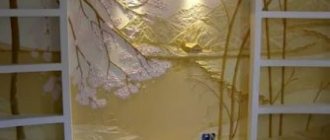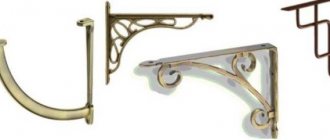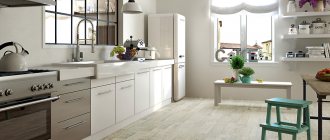Each interior style has a zest that attracts the eye. In the direction of Provence, the key note is warmth and comfort, creating the atmosphere of a house in the countryside. This aura is woven from many details. One of them will be paintings for the kitchen in the Provence style.
Paintings for the kitchen in Provence style
Origins of style
Provence style is gentle and light, like a breath of wind through a weightless curtain. He has been winning hearts for many centuries and, it would seem, has always existed. However, the direction has a birth year.
Bright kitchen in Provence style
Provence was born in the century before last. Its homeland was a romantic province in southeastern France. The 17th century gave the country impetus to the development of urban infrastructure. Along with it, the bustle and noise of busy streets grew. Bohemians, who previously valued city life so much, suddenly rethought the idea of peace.
Kitchen in Provence style
A love of silence and simple pleasures slowly but surely crept into fashion. Thus, the French bourgeoisie began to actively develop their favorite provincial corners, which they preferred to noisy urban areas. The parental home became not just a childhood nest, but a family heirloom.
Bright paintings in a Provence style kitchen
The Provence style is reflected not only in the interior design. The next century became truly golden for him. Light lavender motifs have crept into art and literature. Evidence of this is the works of Honore de Balzac and the unimaginable landscapes of Cezanne.
Paintings depicting green olive branches, flowers in pots and vases, harmoniously combine with the interior of the kitchen in the Provence style
Later, bohemians, writers and artists became interested in the direction. Provence has become not just a household style, but a sign of good taste.
Landscape design in Provence style
Endless lavender fields and vineyards, silence and tranquility mixed with sea air - this is Provence.
Everyone has their own, but invariably simple surroundings, fresh air, herbs are integral components of this picture. The landscape design of a country house in the Provence style can be created independently on your own small or large plot of land.
What is Provence
The name of the region in southern France comes from the simple word "province", which was given to it during the Roman era. Until the 13th century, Provence was part of the Roman Empire, and later became a province of the French Kingdom. From the south, Provence is caressed by the waves of the Mediterranean Sea, from the north the Alps block the winds. A special climate has been created here, and the cozy atmosphere of provincial towns and villages is conducive to a leisurely rest.
Lavender, Flowers, Blue, Lilac Field
Far from bustling Marseille and medieval Avignon lie lavender fields, which provide 80% of the world's total volume of this fragrant raw material. The mild climate allows grapes to be grown in large quantities in this area and excellent wines to be made from them.
Wines of Provence
Provence is the smell of lavender, roses, good wine and the sea. Everything is surrounded by centuries-old village walls and fruit trees.
Do-it-yourself landscape design in the Provence style is easy to implement on your site. In this style, the main attribute is simplicity and naturalness.
The creation formula assumes the presence of:
- fruit trees or one tree;
- spicy herbs;
- plants in all possible shades of pink and blue;
- walls painted in soothing pastel colors or simply white;
- fragrant roses;
- garden furniture with traces of antiquity;
- stonework around the flower bed;
- paths paved with natural stone or sprinkled with gravel.
Fruit trees are planted under the protection of a wall and form a crown shape similar to a fan. In real Provence, these could be peaches, but it is important not to blindly copy, but to create a landscape based on the real climate. If it is possible to protect trees in frosts or plant zoned varieties of peaches, then pourquoi pas?
The main attribute of the “Provencal” corner is the presence of lavender. This plant is not capricious and can easily grow in conditions much harsher than the French province, if it is possible to shelter for the winter. A planting site is chosen that is protected from the winds, which is facilitated by a wall. Lavender is sowed for seedlings around the end of February.
Lavender paradise
Lavender instead of a border
Lavender and roses
Each gardener has his own vision of this corner. Perhaps some will only find scuffed wooden furniture, old chairs or armchairs from the family storage room appropriate. Light openwork metal furniture with a touch of antiquity will look good, the main thing is that it is comfortable and does not look like a stranger in the world of simplicity. To do this, you can use pillows that add comfort to the interior. In addition to furniture, clay jugs from grandmother’s inheritance, carelessly placed among flowers and herbs, would be appropriate in a corner of the garden.
Openwork metal bench in landscape design
Shabby wooden bench
Herbs look great in jugs and pots. Such a garden can be set up right on the summer veranda within walking distance from the kitchen.
Connecting link
Landscape design of a summer cottage in a Mediterranean style suggests decorating paths and paths with natural stone or wood. A combination of wooden furniture and paths made from wood cuts will be harmonious. These pancakes are used to pave the path. They are laid on a sand-gravel mixture, which, in turn, is poured onto insulating material. Such a pillow is necessary to protect against weeds and tree shoots that destroy logs that fit tightly together.
For garden furniture made of stone or metal, it would be logical to use natural stone or fine gravel as a covering for the path.
Maintenance of any type of path is required almost year-round. The wood becomes moldy and must be scraped once a year and treated with special compounds. Stone slabs can also collapse depending on the structure of the stone and atmospheric conditions. When moisture gets into the cracks, it subsequently freezes and breaks the stone and spoils the appearance of the coating.
Peach wall
The name of another attribute of landscape design in the Provence style implies not a color, but a plant. Peaches are planted along the wall of the house, painted in light colors. In order for the harvest to be abundant and large, the trees are pruned and shaped into palmettes. In this form they take up less space, each peach receives more sun and light. As a result, there is practically no shade under the trees and there is room for flowers or a vegetable garden, or better yet, all together. After all, a zucchini with beautiful leaves can decorate any flower bed. Beauty and benefit are nearby.
In areas with a harsher climate, apple and pear trees can be selected as participants. A decorative apple tree will delight you with beautiful unusual flowers in the spring, and small but edible fruits will ripen on it in the summer. Professionals recommend having at least one such beauty on your site, because its fragrant flowers attract pollinators for the entire garden.
A thrifty owner sees potential jam in apple and pear trees. If you boil syrup from aromatic Antonovka and keep small apples from a decorative apple tree in it, then such a product is unlikely to survive until winter. Here at the table in a cozy Provençal corner, tea with mint that grows in a flowerbed, with a bite of jam from your own apples, will put a caring gardener and his family in a lyrical mood.
Shaping the tree for a peach wall is quite simple. In May, the young seedling is pruned above the third bud from the ground. The central branch begins to develop from the upper bud. It is given a vertical position, the rest are formed as it grows.
Grandma's old chest gets new life
Each item in the Provence style garden has traces of age and wear, but not dilapidation. The wooden bench in the cozy relaxation corner does not sparkle with brand new planed boards, but the ceramic pots with spices seem to have been passed down from generation to generation.
An old wooden cart wheel, left near a flowerbed, must definitely be useful to the owner, and waiting in the wings it is already overgrown with flowers and aromatic herbs.
When creating a landscape design for a country house in a Mediterranean style, the ability to dress old things in a new setting becomes an art. A clay mug discovered in grandma's old house makes a great napkin holder or basil pot. And that old round wooden table from the attic will fit very well into an outdoor dining area. You just need to wash it and sand it down to remove any loose paint. And the fact that it is old and shabby is even cool and fashionable.
House in the village
Provence style refers to the rural style of southeastern France. “Country” and “Provence” are the same thing, but each “country” has its own characteristics, which in the case of France resulted in a separate style.
In Provence, only natural materials and hand-made parts are used to design and decorate your home.
Buildings in the garden can be wooden or stone, but painted in light and warm colors:
- white;
- lactic;
- beige;
- peach.
It is good to have a wooden gazebo entwined with climbing fragrant roses in such a country garden. It will contain a wooden table and rough stools or a cozy wooden sofa with scattered pillows. The design of a site in the Provence style should show slight negligence, but not abandonment. The refrain in this style is the idea of comfort and warmth.
Color of sky and sea
The province of Provence is not only about black and white cows and pink-cheeked thrushes. This is also the luxurious Cote d'Azur, endless fields of plants, the color of which is unforgettable. This color is called lavender after the name of the plant itself. The main colors of Provence are the color of the sky, sea and lavender.
By adding greens and silver-gray paints to blue and cyan, you can get a painting in the style of Claude Monet. Pink touches will add cheerfulness to the landscape.
Blue color will be added:
- hyssop;
- catnip;
- sage. The silver-gray olives of Provence will be replaced by the common silver oleaster, growing along the banks of rivers and spreading the amazing aroma of its inconspicuous flowers in the spring. Wormwood in all its gray forms will highlight the deep blue of hyssop with its panicles.
Apart from lavender, no other flower has a lavender color. In the climate north of Provence, she feels quite confident under the protection of walls or stone. If there are doubts about its winter hardiness, you can use the potted form of this plant.
Lavender can be replaced by:
- blooming Sally;
- mountain mint "Burning Sunset".
- Landscape design in Provence style. Photo examples
- Blooming Sally
The color of these plants is not lavender, but the variation on the Provence theme allows deviations from the ideal.
Place Provence in your soul and make your dream come true!
via
Color solution
In the Provence interior, the colors are muted and pastel. Lavender, soft olive, white, beige, sea green, azure, and terracotta predominate. White color is present in the decoration of walls, furniture, and ceilings.
Related article: Optimal colors of suspended ceilings for interiors
If white walls are not your option, then use pastel shades of blue, green or lavender for decoration. In this case, the color of the furniture should be a tone brighter. It should stand out against the background of whitewashed walls. Bright shades dilute the interior. Against the background of faded walls, yellow curtains, a tablecloth on the table in soft blue tones, and blue sofa cushions will look advantageous.


